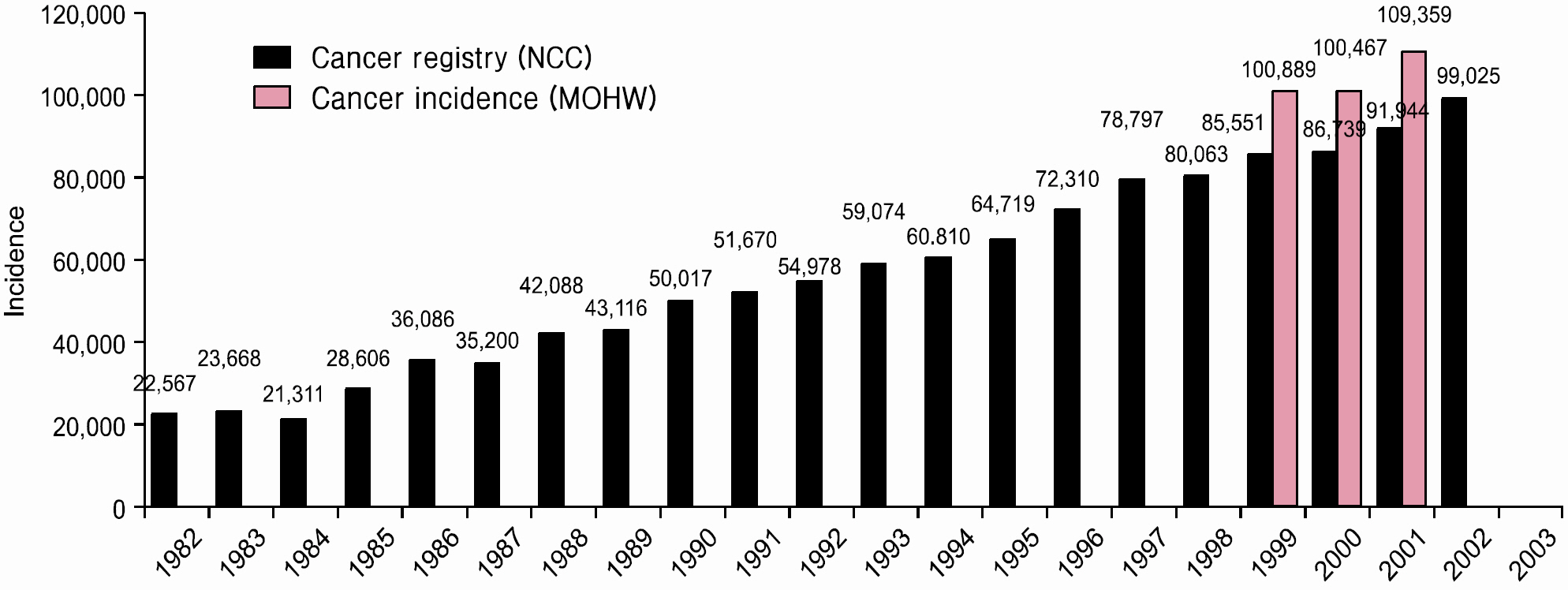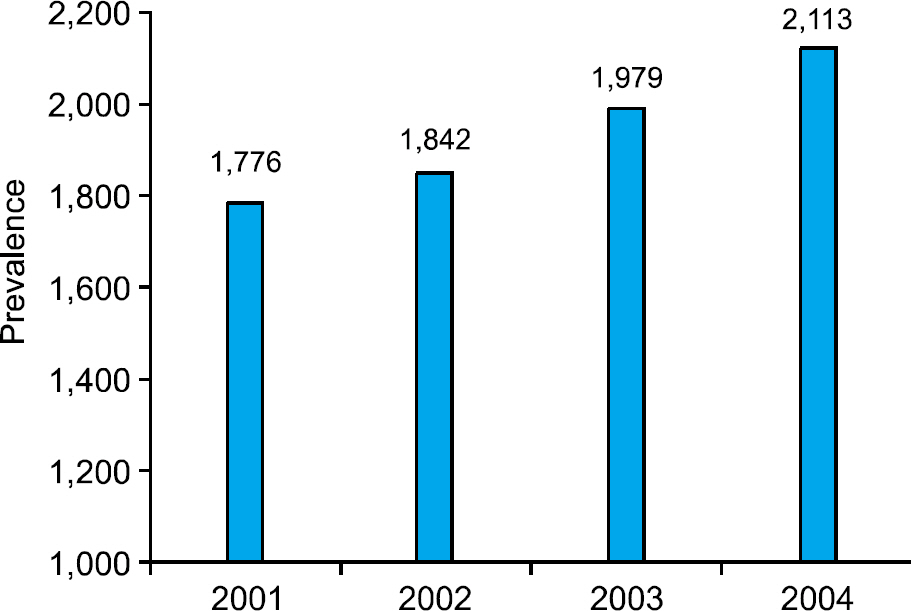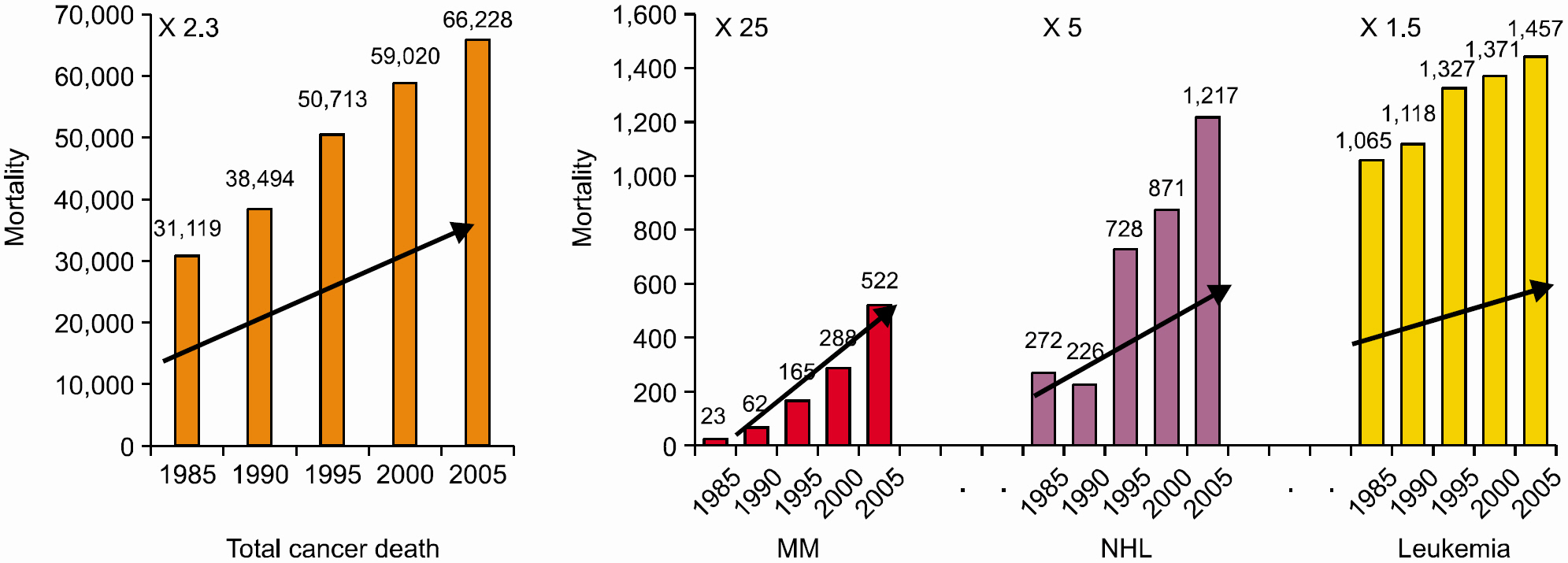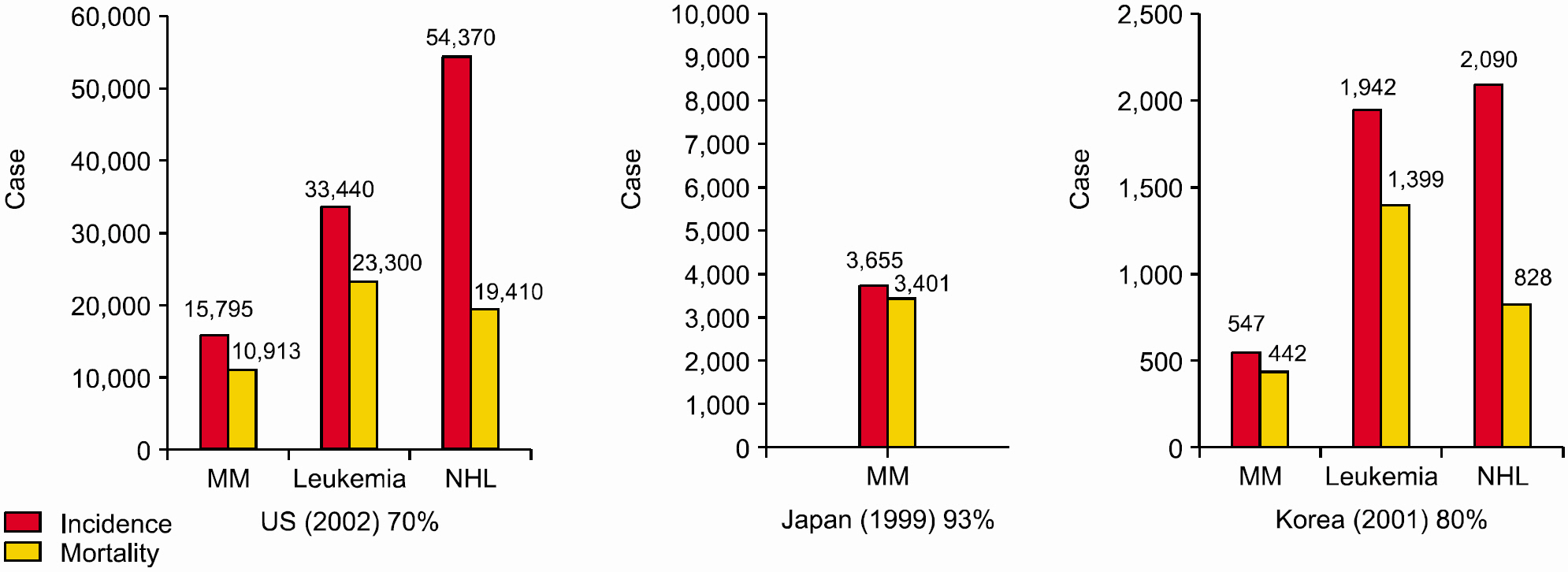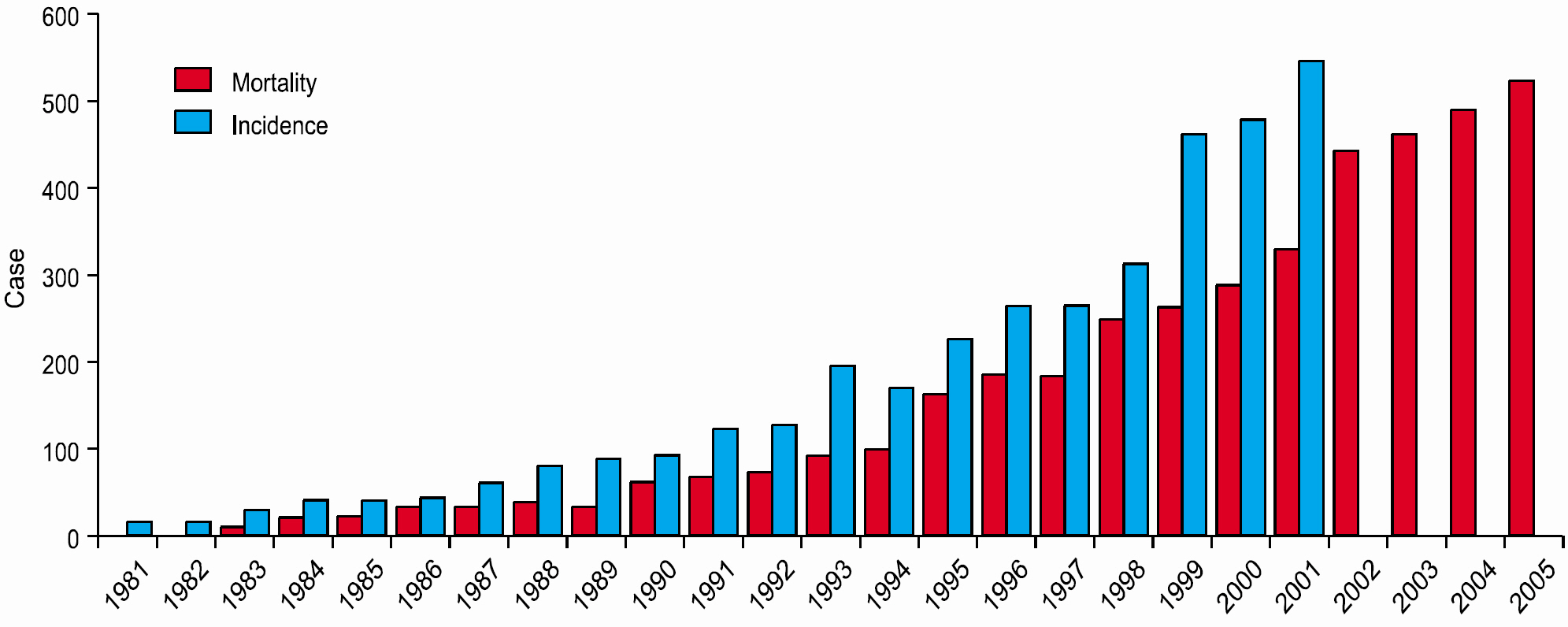Korean J Hematol.
2006 Dec;41(4):225-234. 10.5045/kjh.2006.41.4.225.
Epidemiological Change of Multiple Myeloma in Korea
- Affiliations
-
- 1Department of Internal Medicine, Gachon University of Medicine and Science Gil Hospital, Incheon, Korea. jhlee@gilhospital.com
- 2Department of Internal Medicine, Seoul National University Bundang Hospital, Bundang, Korea.
- KMID: 2305208
- DOI: http://doi.org/10.5045/kjh.2006.41.4.225
Abstract
- Multiple myeloma is a hematologic neoplasm with a unique and characteristic manifestation. This condition is responsible for 10% of hematologic malignancies, and thus represents 1% of all cases of cancer in the US. In Korea, unlike in Western society, myeloma has classically been relatively rare, due in part to racial differences. However, the incidence of this disease in Korea has increased steadily over the last 25 years. During this period, both the incidence of and mortality due to myeloma increased by up to 30-fold. Currently, incidence rate and mortality rate exceed 1.0/100,000. Possible reasons for this increase include better detection, as well as an actual increase, probably attributable to contributing factors, including pollution, exposure to chemicals, and socioeconomic change, all of which are related to rapid industrialization. Aging is another important factor contributing to this perceived increase. With the advent of targeted therapy, Korean myeloma study group was organized under the auspice of Korean society of hematology. In addition, Korean myeloma registry was established recently. In this study, epidemiological changes in the incidence and mortality of multiple myeloma in Korea are assessed and compared with the situations of the US and Japan. This article also claims the need for multicenter clinical trials as well as activation of basic researches in myeloma.
Keyword
MeSH Terms
Figure
Cited by 1 articles
-
Direct Measurement of Serum Immunoglobulin Heavy and Light Chain Pairs for Identification of Monoclonal Gammopathy and a Performance Comparison with Capillary Electrophoresis
Min Gu Kang, Myung-Geun Shin, Jin-Gak Kim, Min-Joong Jang, O-Jin Lee, Hye-Ran Kim, Duck Cho, Soo-Hyun Kim, Seung-Jung Kee, Jong-Hee Shin, Soon-Pal Suh, Dong-Wook Ryang
Lab Med Online. 2014;4(1):28-35. doi: 10.3343/lmo.2014.4.1.28.
Reference
-
1). Tricot G. Multiple myeloma and other plasma cell disorders. Hoffman R, editor. Hematology. Basic principles and practice. 3rd ed.Philadelphia: Churchill Livingstone;2000. p. 1398–416.2). Bergsagel PL. Epidemiology, etiology, and molecular pathogenesis. Richardson PG, Anderson KC, editors. Multiple myeloma. 1st ed.Chicago: Remedica;2004. p. 1–24.3). Ries LAG., Eisner MP., Kosary CL., Hankey BF., Miller BA., Clegg L., Mariotto A., Feuer EJ., Edwards BK. SEER Cancer Statistics Review, 1975-2002, National Cancer Institute, Bethesda, MD. http://seer.cancer.gov/csr/1975_2002/. based on November 2004 SEER data submission, posted to the SEER web site. 2005.4). International Agency for Research on Cancer (IARC) statistics. Worldwide Cancer Incidence Statistics. http://jncicancerspectrum.oupjournals.org/cgi/statContent/cspectfstat;110.5). Ajiki W., Tsukuma H., Oshima A. Research Group for Population-based Cancer Registration in Japan. Cancer incidence and incidence rates in Japan in 1999: estimates based on data from 11 population-based cancer registries. Jpn J Clin Oncol. 2004. 34:352–6.6). Lee H., Lee M. A case of α2- plasmacytoma. New Medical Journal. 1959. 2:1113–7.7). Kang DY., Lee DI., Kim KH, et al. Statistical studies on multiple myeloma in Korea-preliminary report. Korean J Hematol. 1972. 7:31–40.8). Yang SH., Kim TY., Kim BK, et al. A statistical study of multiple myeloma in Korea. Korean J Hematol. 1995. 30:345–61.9). Annual Report of the Korea Central Cancer Registry (Based on Registered Data from 139 Hospitals) Korea Central Cancer Registry, Ministry of Health and Welfare Republic of Korea. (2002 1 ∼. 2002. 12). http://www.ncc.re.kr/.10). Korean Health Insurance Review Agency. 2004 Health Insurance Review and Evaluation Statistical Yearbook. http://www.hira.or.kr/.11). Lee SI., Ko YW., Hahn JS., Kim KS., Chai ES. A clinical study on multiple myeloma. Korean J Intern Med. 1976. 19:208–17.12). Song HH., Lee JH., Park JB, et al. Prognostic factors affecting response to chemotherapy and survival duration in Korean patients with multiple myeloma. Korean J Intern Med. 2000. 58:83–90.13). Annual report on the cause of death statistics, National Statistics Office, Korea. http://www.nso.go.kr.14). Bang SM., Cho EK., Suh C, et al. High dose therapy followed by autologous peripheral blood stem cell transplantation as a first line treatment for multiple myeloma: a Korean Multicenter Study. J Korean Med Sci. 2003. 18:673–8.
Article15). Bang SM., Lee JH., Yoon SS, et al. Preliminary report of risk-based approach in Korean patients with newly diagnosed multiple myeloma. Blood. 2004. 104:310b.
Article16). Bang SM., Lee JH., Yoon SS, et al. A multicenter retrospective analysis of adverse events in Korean patients using bortezomib for multiple myeloma. Int J Hematol. 2006. 83:309–13.
Article17). Bang SM., Kim YR., Cho HI, et al. Identification of 13q deletion, trisomy 1q, and IgH rearrangement as the most frequent chromosomal changes found in Korean patients with multiple myeloma. Cancer Genet Cytogenet. 2006. 168:124–32.
Article18). Kim H., Sohn HJ., Kim S, et al. New staging systems can predict prognosis of multiple myeloma patients undergoing autologous peripheral blood stem cell transplantation as first-line therapy. Biol Blood Marrow Transplant. 2006. 12:837–44.
Article



